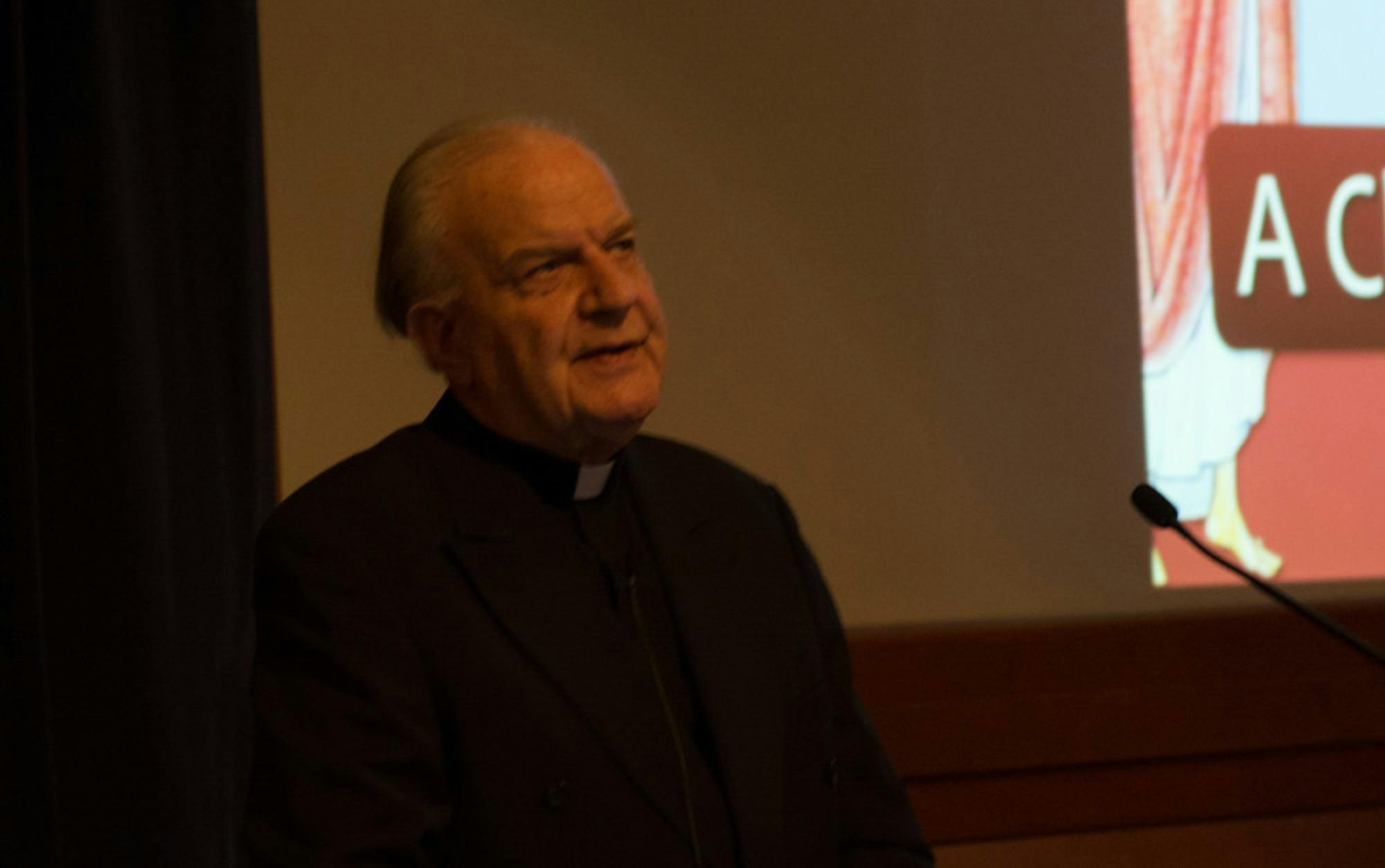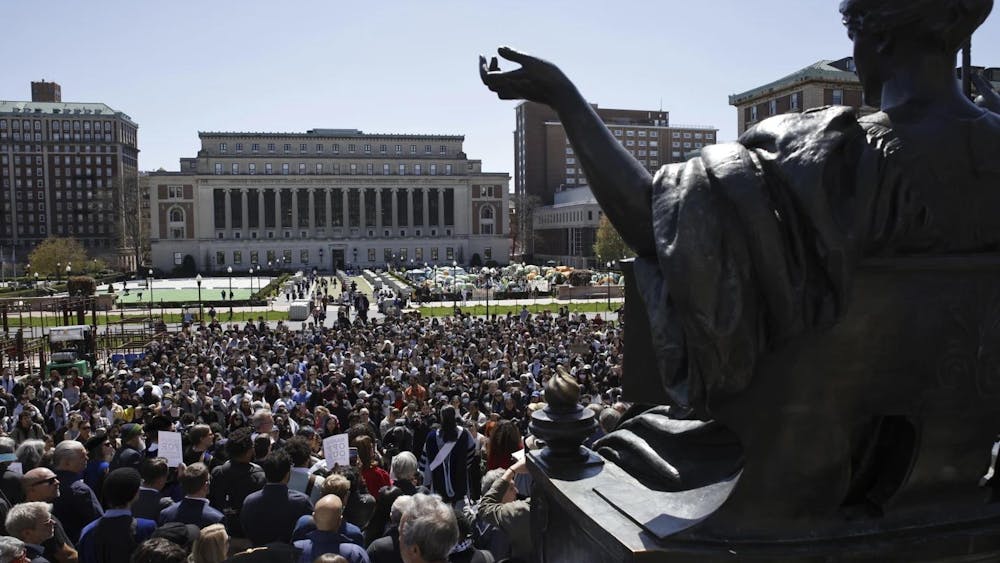
“Some are in the Eck Center, some are in the main lobby of the Morris Inn, some are in McKenna Hall, some are in the Main Building, some are in the Hesburgh Library concourse,” he said. “Our idea is to have provided not simply an exhibition of artistic work — though that is what it is — but also to provide people the opportunity for pilgrimage, so that they can walk from one building to the other, and they can prayerfully encounter these images of the holy family and the nativity.
“It’s probably nowhere more evident the global enculturation of the Gospel, than in the depiction of the nativity of the Lord, which is the third the joyful mystery of the rosary, as in interpreted by people of various cultures of the world, who have embraced this mystery in their heart. And so, in all of these crèches, we’re at once invited into one of the most intimate in a family’s life, the welcoming of a newborn child, and in contemplating this scene, we’re invited into what Christian faith believes to be the most intimate moment between God and creation, the Incarnation.”
Rev. Johann G. Roten, S.M., director of research and special projects at the University of Dayton, delivered the opening lecture, entitled, “The Crèche: A Celebration of Christmas and Culture,” for the exhibit on Wednesday night in the Eck Visitors Center Auditorium.
Roten said the crèches demonstrate the close relationship between culture and religion.
“And indeed, that relationship between culture and religion has always been a very important concern because where does religion begin? Where does culture stop? How do the two combine? Which is influencing the other?” Roten said. “All of these different things we try to develop and to study in and through our nativity collection.”
There are three fundamental ways of looking at nativity traditions, which can be categorized as “mountain,” “landscape” or “village," Roten said.
“When you look through what became the oldest and most important of the nativity tradition, which is of Latin origin, a combination of Italy and Spain, through the city of Naples, a couple things come to the forefront, which have a deep theological meaning," he said.
The design of these crèches is such that the nativities are depicted at the bottom of a mountain, Roten said.
“The idea being that the divinity, Jesus Christ, had to go through all the strata of human reality in order to get to the bottom of that reality, and therefore be able to assume the whole of that reality," he said. "It’s a very important idea, and you find it in quite a lot of those different representations of the nativity."
The “landscape” is found in crèches of the German tradition, Roten said.
“Nature becomes an important part, because it shows that the nativity is always a miracle," he said. "And how do you represent the miracle? Difficult, of course to explain, but at least symbolically you can explain it, in showing in that landscape, for instance, an apple tree laden with apples. Now it’s the end of December. How could you explain it? That’s an illustration of the miracle."
The “village” is found in crèches of the French tradition, especially those of the Provence region, Roten said.
“All inhabitants of the village would come to the manger,” he said. “The ‘village’ is an expression not only of the global village but also, what we call in theology the ecclesiology of communion. We have on the one hand great unity and on the other great diversity around the baby in the manger.”













